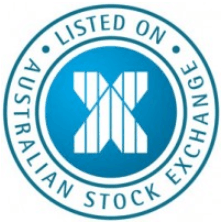
There are three main macro thematics which I feel deserve growing attention. Whether any of them can effectively derail the equity rally anytime soon is yet to be seen, but I feel the seed has been planted and certainly requires close monitoring.
European money markets in focus
Firstly what seems to be shaping up in Europe is of strong interest. The ability of the ECB to control short-term money market rates (EONIA) is firmly in the markets’ sights, and when the eurozone is expected to grow a mere 1% in 2014, clearly the last thing the economy needs is higher lending rates, especially when lending is actually starting to look less bad. The falling liquidity, driven by European banks repaying funds borrowed from the ECB’s LTRO programmes (longer-term refinancing operation) in 2011 and 2012, has fallen below Mario Draghi’s pain ‘threshold’ of €200 billion; we are now seeing the reaction in the money markets, with EONIA spiking to 22 basis point (bp) (up from 10bp on Wednesday). Bear in mind this is well below levels seen in 2007 at 460 basis points (or 4.6%), but has moved from 6.8bp in September, so in percentage terms is significant.
The prospect of a refinancing rate cut next week from the ECB has clearly increased, especially after yesterday’s woeful inflation report, which at 0.7% is substantially below the banks 2% target. Still, what will a 25 bp cut actually achieve? At best it could cap money market rates, however let’s say it doesn’t and the continued repayment of funds from the European banks causes EONIA to spike higher than the refinancing rate, it could led to a perception longer-term of a cut to its deposit rate. This would actually be huge and would be a massive EUR negative. Italian banks still hold just under 90% of their LTRO funds (presumably as a buffer against political risks), but let’s say they repay these funds back more quickly, then it could get very ugly indeed for the ECB. There would also be calls for QE from the ECB, although this requires treaty change and would get massive resistance from Germany.
China’s manufacturing continues to grow
China has kicked off the manufacturing PMI series producing a good set of manufacturing PMI figures today, with the official print at 51.5 and the HSBC print at 50.9 (both slightly better than expected), but if you drill down the underlying quality of the expansion, it was not brilliant. The new orders sub-component fell to 52.5 from 52.8, while new export expanded at a slower pace of 50.4 (from 50.8). You could also have said the further falls in the money markets (seven-day repo rate down 43bp) could have also been an equity positive; however the Shanghai Composite is flat.
The fact is China did a brilliant job massaging its economy into September, when the vast majority expected the Fed to taper its bond buying programme and other emerging markets saw huge outflows. How will the country fare this time around in January or March, when property restrictions will be more prominent, banks are being asked to restrict credit, the CNY is at a twenty-year high and the big banks are seeing an increase in sour loans? You can understand then why the local index is underperforming, despite supposedly having compelling valuations. The fact is the PMI numbers were better; however are they sustainable given credit contraction is a good leading indicator of future manufacturing growth?
The Asian session has been pretty lifeless today, with the different bourses trading in tight ranges, although on the forex side we saw EUR/USD trade through overnight lows, while USD/JPY has broken the October uptrend, taking the Nikkei down with it. The ASX 200 saw no upside from the manufacturing numbers, with materials lower on the day.
This leads me to the US and as argued earlier in the week, the lack of concern from the Fed around the prior or upcoming fiscal negotiations and a lessening of concern around financial conditions (due to falling bond yields) has thrown an element of doubt as to the recent market consensus of a March tapering exercise from the Fed. Could it be we see the Fed move in December or January? If all data was as red hot as yesterday’s Chicago PMI (with the index surging to 65.9) then we wouldn’t be just staring at the prospect of tapering, but probably a 50bp hike in the funds rate early next year! What’s more, the new orders sub-component increased to 74.3 (the highest reading since October 2004) and the risk is that today’s ISM manufacturing print will come out closer to 57.0, rather than consensus at 55.0. However, with the market looking at each individual data release, every piece feeds into the idea of when tapering will occur; despite it mattering very little whether tapering occurs in January or March, we are still likely to see a negative equity response.
Keep an eye on narrative from James Bullard
James Bullard, Jeffery Lacker and Narayana Kocherlakota are due to speak, although James Bullard is the most likely to give the most interesting narrative for traders. Mr Bullard is as dovish as they get on the Fed, so anything that gives the impression of a January taper will be seen as very USD positive and equity negative. Still. the probability is that he will talk about concerns around job creation and more needing to be done to promote inflation.
Despite pretty lifeless trade and a slight bid in the USD, it seems European markets will generally open on the front foot, although the Spanish market (IBEX) could pare back some of yesterday’s outperformance. Traders have much to look out for, and while EONIA will be in focus, on the data side we get PMIs in the UK, Norway, Sweden, Greece, Denmark, Brazil and Turkey. Earnings will be in focus from Chevron, Berkshire Hathaway and RBS.